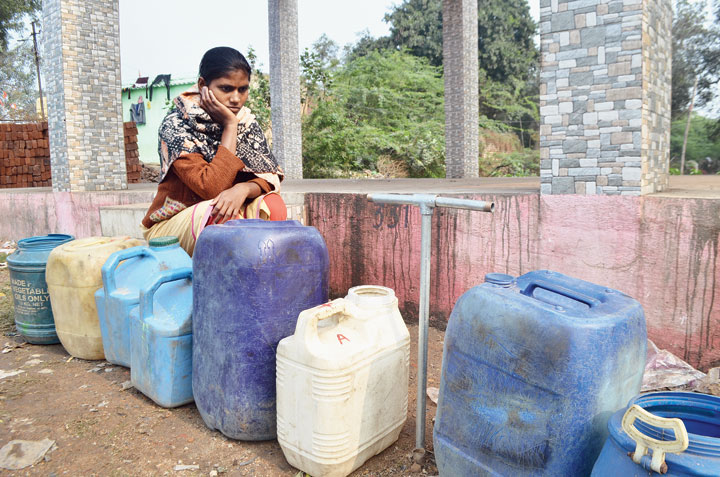For residents of Baniahir in Jharia, which goes to polls on Monday, the claims by election candidates of having built toilets under Narendra Modi-government’s Swachh Bharat Abhiyan don’t hold much water.
The acute scarcity of water has rendered the loos useless.
Around 2,000 families living in the most water-scarce area of the district have to depend on ponds to meet most of their daily requirements.
“Hamare yahan nai naveli dulhan bhi sirf do din ghunghat odhke ghar mein rahti hai. Teesre din who ghar ke bahar talab par nazar aati hai. Usko ghar me nahane liye pani kaun dega, jabki ham mushkil se pine ke liye pani laa paate hain? Baki sab kam talab pe hota hai (Here even a new bride remains in veil for only for two days. You can spot her at the pond on the third day. Who will bring water for her to bathe when we have to take so much trouble to arrange for drinking water? We perform all our daily chores at the pond outside)” said Prem Bachchan Das, a resident of Baniahir, about 13km away from the Dhanbad district headquarters.
The government’s open-defection-free mission has also taken a big hit here.
Das said the waterless toilets compelled a majority of residents to go outside to answer nature’s call.
“The walls of the community toilet is used by women to dry cow dung cakes,” Das added.
Manju Devi, a homemaker, said the public water stand post of Mineral Area Development Authority (Mada) remained dry most of the time.
“We keep awake at night waiting for water to come. Sometimes, supply resumes for half-an-hour at night when pressure in the main supply pipeline is high,” she said.
Santosh Kumar Rajak, 23, a BSC student at RSP College in Jharia, said he had to bring around 12 buckets of water from the pond 500m away every day to meet the daily requirements of his family members.
“I have to make six trips to the pond and it takes me around three hours per day,” he said.
He said it hampered his study routine at a time he was preparing for his sixth semester exams.
Civil services aspirant Avinash Kumar, 36, of Hanuman Garhi locality had to leave his coaching course at Patna for Bihar Public Services Commission midway to take care of his family grappling with the water crisis.
“We had a Mada water connection, but the supply stopped five years ago after the main pipeline passing through our area developed leaks. We took a fresh connection three years ago by spending around Rs 5,000. But good days lasted for only three years after which the water flow decreased and finally stopped two months ago,” he said.
He said he was forced to purchase water at Rs 500 per 2,000 litre, but it lasted four days even if they spent it frugally.
“I met Mada officials who said the supply won’t improve until the leaks were repaired after elections,” Kumar said.











